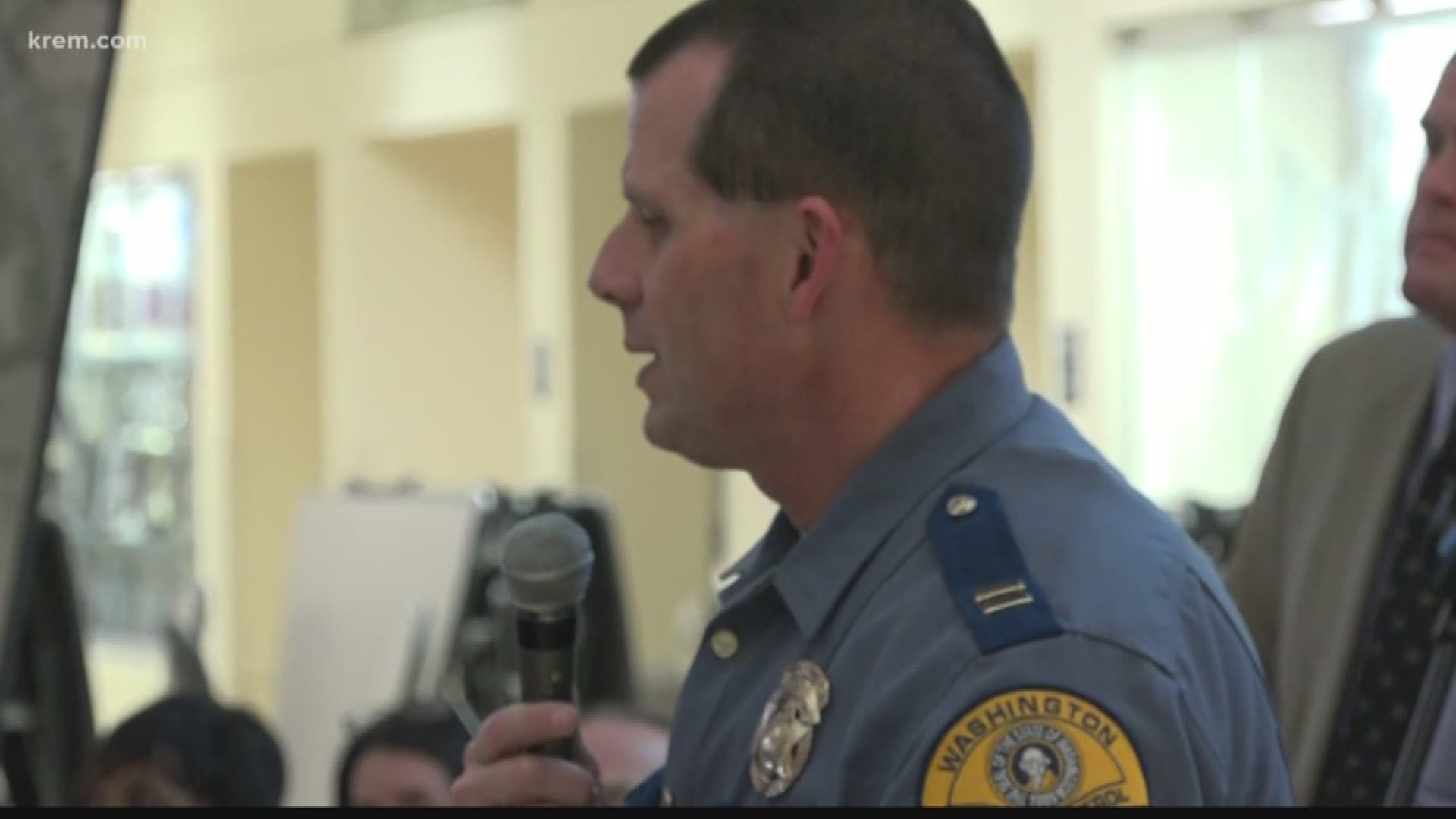Representatives from the Washington Department of Transportation met with more than a hundred Colbert-area residents Thursday night in an at-times heated discussion about a dangerous intersection.
The crossroads between U.S. 2 and Colbert Road is a tricky one – it requires going from a stopped position directly perpendicular to traffic. It’s been host to a number of accidents in the last few months alone.
With a school nearby, parents grew especially concerned and drew up a petition asking WSDOT for action.
Citizens wanted either a signal, a roundabout or a lower speed limit. They did not receive good news. WSDOT told them all three of those options are inviable.
A traffic signal there would only cause other safety issues, WSDOT said. A roundabout would cost millions the department does not have. There are other intersections in the state with far higher accident rates that take priority when it comes to spending of that magnitude. Furthermore, a lot of people do not like roundabouts very much and widespread support is all but necessary before any solution can be implemented.
The speed limit issue was the most contentious. A WSDOT representative and a captain from the Washington State Patrol both said their evidence suggests changing the speed limit would not have any real impact and in fact might cause bigger problems. The issue is that people will often ignore the posted limit and just drive whatever feels comfortable, they said.
But some commenters did not buy that answer. During a marathon Q&A session, the speed limit issue was brought back repeatedly, causing growing frustration from both the audience and the speakers.
Though people often spoke out of turn, and occasionally accused the representatives of inattentiveness, the conversation as a whole was measured and productive. Both speakers and commenters mentioned at points that they had learned a lot from the dialogue, and nodding and applause were more common than interruptions.
After WSDOT had dispensed with the three major proposals, a number of audience members were left wondering, What do we do now?
WSDOT said the answer depends on the community’s openness to lower-cost, and at times controversial, alternatives. The main option raised: Restricting some types of movements at the intersection. In other words, making it illegal to go straight across and requiring right turns only. While many in the audience raised their hands to indicate openness to this solution, some opposed commenters said it would be a massive inconvenience and would only require other difficult turns at other places.

